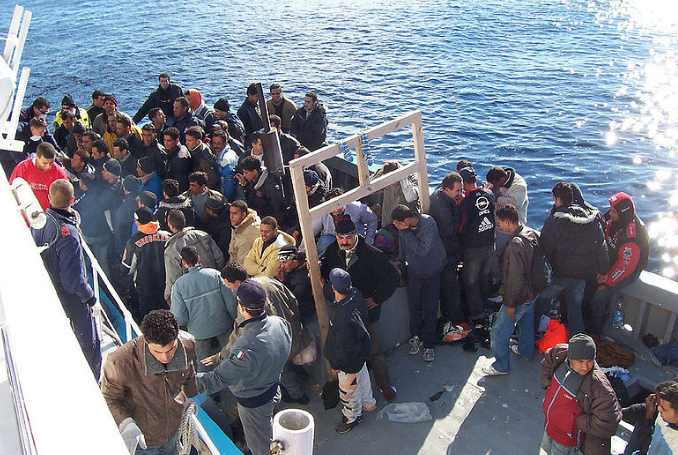
In a new report, the Guardian has mapped out the surveillance and deterrent systems being used on EU borders to deter refugees.
Last month Poland approved a $398 million, 18-foot-high wall, with cameras and motion sensors to be built along its border with Belarus. It is also sending automated texts to people telling them not to attempt to cross from Belarus.
"The EU is central to the push towards using technology on its borders, whether it has been bought by Frontex, or financed for member states through EU sources, such as its internal security fund or Horizon 2020, a project to drive innovation." https://t.co/XuyRDXXgsh
— Abolish Frontex (@abolishfrontex) December 6, 2021
Last year Frontex awarded a $121 million contract for the Heron and Hermes drones which operate over the Mediterranean and can be watched from the Frontex HQ in Warsaw. The drones are manufactured by two Israeli companies and have been used in the Gaza Strip.
Mobile radars, thermal cameras on vehicles, heartbeat detectors, and CO2 monitors are used to spot movement and find people hiding inside vehicles, according to the report.
The EU has also spent $399 million on a three-year trial of artificial intelligence-powered lie detectors in Greece, Hungary and Latvia where a machine scans refugees’ faces as they answer questions and decide whether or not they’ve lied.
'Combat Proven': Israel's thriving war business in Europe @AJEnglish https://t.co/yqMadRSSY1
— العودة Ziomythologist 🇵🇸 (@Aer_O_Head) December 25, 2018
Since 27 people died in the English Channel on 25 November the UK Prime Minister Boris Johnson has pushed for more border security, including increased patrols at sea, electronic surveillance and spying.
However, charities have warned that increased security does not stop people trying to cross borders, it simply encourages them to take more risky routes whilst arms and tech companies close to the EU benefit.
(MEMO, PC, Social Media)








